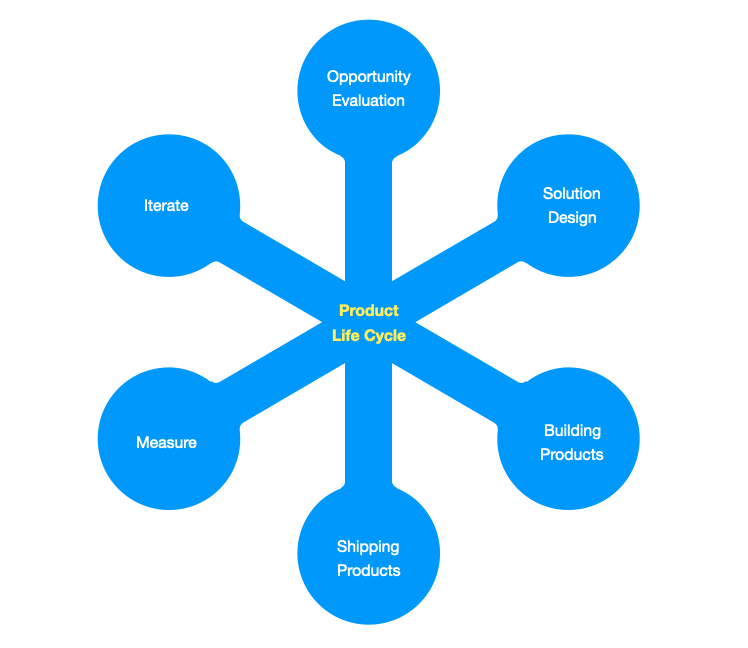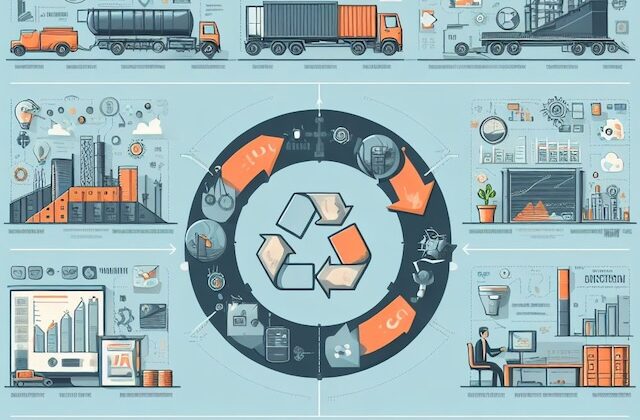“A great product manager has the brain of an engineer, the heart of a designer, and the speech of a diplomat.”
—Deep Nishar
This series is for anyone stepping into the world of Product Management (with less than two years of experience).
And if you’re a seasoned PM lurking here, don’t worry—I won’t call you out. Stick around, and let’s brush up those basics together.
🚀 Ready to Dive Into the World of Product Management? 🌟
First up: What is a product?
A product isn’t just the shiny gadget you grab during Black Friday sales. It can be:
- Tangible: Your smartphone, that must-have gym equipment currently doubling as a laundry rack.
- Intangible: A Netflix subscription, Spotify playlist curation, or even Google Docs.
Basically, it’s anything that solves a problem or makes life easier. Even that app that lets you add glitter to your selfies is a product (though I have questions about its market value).
What is Product Management?
Product Management is like being the captain of a pirate ship, except instead of treasure, you’re chasing market fit. Your job is to:
1. Build something valuable.
2. Make it better than the competition (like turning your rowboat into a yacht).
3. Ensure it makes money before its glory days fade.
The Drama of the Product Life Cycle 🎭
Every product lives through six key stages—a journey as dramatic as a reality show.

1. Opportunity Evaluation:
You’re Sherlock Holmes, investigating what’s missing in the market.
- Example: Ever notice how annoying it is to untangle earphones? Enter AirPods. Someone spotted that pain point and created a solution people were willing to pay for (even if they lose them every other week).
2. Solution Design:
Now that you’ve identified the problem, it’s time to sketch out the answer.
- Example: Think of Duolingo. The problem? Learning a new language can feel like a chore. Their solution? Make it gamified, fun, and snackable.
3. Building the Product:
Roll up your sleeves—it’s time to build! Your development team codes, engineers, and tests your shiny new idea.
- Example: Remember the first iPhone? Steve Jobs didn’t just dream it up overnight. It took countless iterations and prototypes to create the game-changing product we know today.
4. Shipping the Product:
The big day! Your product is out in the wild.
- Example: When Tesla launched its Cybertruck, it was a bold moment. Sure, the “unbreakable” windows broke during the demo, but the buzz it created was priceless.
5. Measure:
After the launch, the real work begins. Is the product meeting expectations?
- Example: Instagram Reels wasn’t perfect at first, but they gathered feedback, tweaked algorithms, and now it’s a powerhouse feature taking on TikTok.
6. Iterate:
Gather, improve, repeat. Products evolve based on user feedback and market trends.
- Example: Facebook started as a social network for college students. Now it’s a global platform connecting billions (and your aunt who shares too many cat memes).
Six Steps to Kickstart Your PM Journey
1. Learn the Basics: Books like Inspired by Marty Cagan or online courses from platforms like Coursera can help you grasp the foundation.
2. Build Empathy: Interview users. For instance, if you’re designing a budgeting app, talk to people about their spending habits (yes, even those who spend $300 on candles).
3. Get Hands-On: Join side projects. Even organizing your local book club can teach you about prioritization and coordination.
4. Network: Attend PM meetups or engage in LinkedIn groups. A coffee chat with an experienced PM can open doors.
5. Master Tools: Learn tools like JIRA (for project management) and Figma (for design collaboration).
6. Stay Curious: The world of tech evolves faster than fashion trends. Keep learning!
The Product Manager – The key player in Product management

A Product Manager is the conductor of the product orchestra. They are the visionaries responsible for defining a product’s strategy, guiding its development, and ensuring its success in the market. Essentially, they are the champions of the customer, translating their needs and desires into a product that meets and exceeds expectations.
The Role of a Product Manager:
– Defining Product Strategy: Product Managers are strategic thinkers. They work closely with stakeholders to establish a clear product vision and roadmap. This involves identifying market opportunities, analyzing competition, and aligning the product with the company’s objectives.
– Prioritizing Features: One of the most challenging aspects of the job is deciding what features to include in a product. Product Managers must weigh customer feedback, market trends, and technical feasibility to make informed decisions.
– Cross-Functional Collaboration: A Product Manager acts as a bridge between various teams within an organization. They work closely with developers, designers, marketers, and sales teams to ensure everyone is on the same page and focused on delivering a successful product.
– Customer-Centric Approach: Keeping the customer at the centre of decision-making is paramount. Product Managers gather feedback, conduct user research, and use data analysis to make data-driven decisions that result in a product that resonates with the target audience.
– Adaptability: The world of technology and business is ever-changing. Product Managers must be agile and ready to pivot when necessary. They must monitor market shifts, customer needs, and technological advancements to keep the product relevant and competitive.
Key Skillsets of a Product Manager:
- Communication: Effective communication is crucial for conveying the product vision and collaborating with various teams.
- Analytical Skills: Data-driven decision-making is essential for success. Product Managers need to interpret data and draw actionable insights.
- Technical Acumen: While not necessarily developers, Product Managers should have a solid understanding of the technical aspects of their product.
- Leadership: Leading without authority is a common aspect of the role. Product Managers must inspire and guide teams towards a common goal.
- Customer Empathy: Understanding and advocating for the customer’s needs is at the heart of the job.
Where Does the Product Manager Fit in the Organization?
Product Managers are typically situated at the intersection of various departments. They report to senior management, often directly to the Chief Product Officer or Head of Product. Their position in the organization reflects the importance of their role in driving product success.
Product managers have different roles in different organisations. Learn more about the types of product managers.
Remember, it’s okay to make mistakes and learn from them. The journey is just as important as the destination. 🌍
Thanks for reading. You can get more actionable ideas in my popular email newsletter. Each week, I publish a new article. Enter your email now and join us.
Quiz Time :
1. What are the three primary objectives of Product Management as outlined in Day 01?
a. Maximizing budget, creating competitors, minimizing profits
b. Creating value, outperforming competitors, maximizing profits
c. Minimizing value, outperforming profits, creating competitors,
d. Maximizing value, creating competitors, outperforming profits
2. What is the first step recommended for beginners in Product Management?
a. Networking
b. Building Empathy
c. Learning Advanced Skills
d. Developing Technical Acumen
3. What does a Product Manager act as according to the content?
a. Developer
b. Visionary
c. Marketer
d. Analyst
4. Which skill is NOT mentioned as essential for a Product Manager?
a. Leadership
b. Technical Acumen
c. Multitasking
d. Customer Empathy
5. Where do Product Managers typically fit in an organizational structure?
a. Below Marketing Managers
b. Above CEOs
c. At the intersection of various departments
d. Only in Small Startups
✍️ Write your answers in the comment section. e.g 1-a, 2-b, 3-c etc.
If you want to learn more about product management, you can also find other posts. The Full series is available here
One of the recommended books to learn about product management is Inspired by Marty Cagan
💌 Do drop me a comment below if you found the content useful and/or want me to write on a specific topic. This will make my day! 🙂
Also, share the post if you think this might help someone. The sharing link is at the top of the page.
Join FreeMentor as a student if you are a newbie in product management and want to have one Free 1:1 mentorship session.
Disclaimer:
Please note that I don’t make any guarantees about the information supplied in this post. I share educational and informational resources that are intended to help you succeed in understanding product management. You nevertheless need to know that your ultimate success or failure will be the result of your own efforts, your particular situation, and innumerable other circumstances beyond my knowledge and control.
#ProductManagement #Beginners #CareerStart #ProductManager #LearnAndGrow


1-b, 2-b,3-b,4-c,5-c